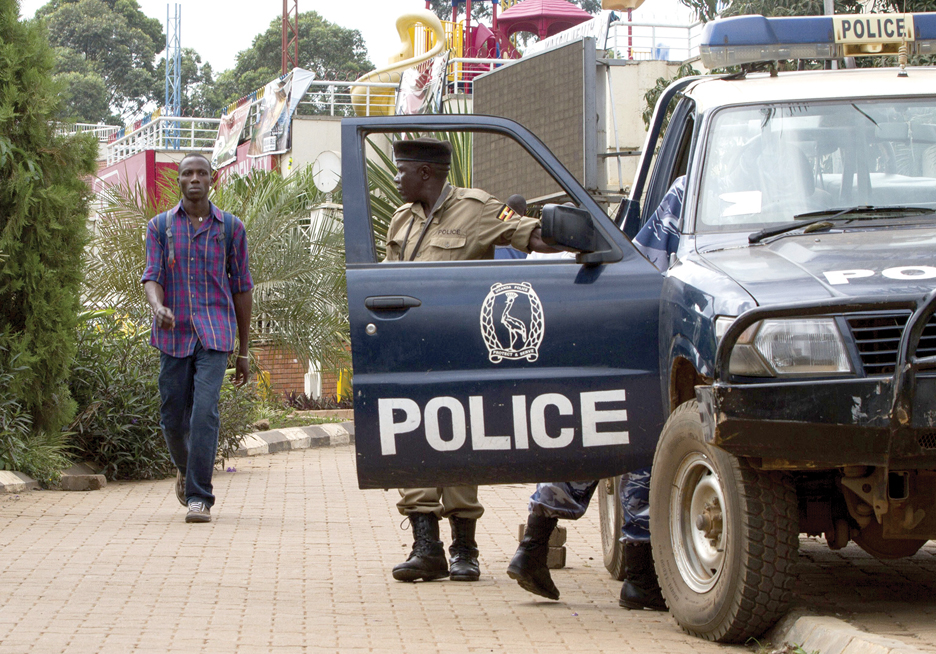
In September 2014, Ugandan authorities discovered an al-Shabaab terrorist cell operating in our biggest city, Kampala. Explosives were discovered in the raid, and there is little doubt that this group of terrorists had no other intention but to cause carnage on the streets of the city.
It was only four years ago when bombs planted by extremists ripped through two locations as crowds gathered peacefully to watch the football World Cup. Now, almost a year from the barbaric events of the Westgate Mall attack in Nairobi, these latest developments show that governments throughout East Africa can never let their guard down.
The government of Uganda has taken immediate steps to shore up our national security — increasing security in public places, partnering with organizers of public events, and activating further counterterrorism measures, including surveillance.
The nature of how the September 2014 discovery came about is worth examination. Along with other recent successes in dismantling key branches of terrorist cells in East Africa, our tactics were based on a broad-based coalition of expertise — of intelligence sharing by various African Union nations, with additional international assistance.
We know that complex and often sophisticated terror networks cannot be met by a single nation’s resolve alone. Terror networks like al-Shabaab have proven that they can operate effectively across porous borders, utilizing technology and sophisticated criminal networks — child trafficking, poaching and drug smuggling — that do not recognize the rigid boundaries of nation states.
And with Ahmed Abdi Godane, the spiritual leader of al-Shabaab now dead, courtesy of a U.S. air strike with AMISOM [African Union Mission in Somalia] forces operating in partnership on the ground in Somalia, it seems that a flexible, multipronged international coalition is the answer to effectively challenge the once creeping dominance of extremist Islamic factions in East Africa.
The Kampala terror cell was an uncomfortable reminder that it takes more than targeted air strikes to sever the tentacles of extremist cells that operate throughout our region. But AMISOM’s relative success in Somalia does indicate that Africa can be at the epicenter of the successful stymying of terror on our continent.
As Ugandans, our commitment to fight terrorism manifested itself at the very beginning when we were the first country to deploy troops in Somalia. We operated for almost two years before other troop-contributing countries joined.
AMISOM is now a credible peacekeeping force that has negotiated Somalia’s deeply divided and fractured web of warlords, clans and militant factions to bring a semblance of stability to the capital, Mogadishu. Somalia has some distance to go before it can boast of restoring the fundamental pillars of a functioning state, but it was an African force, with Western financial commitment and technology, that has made the most progress.
AMISOM has been a story of international cooperation. The financial commitment was considerable — $1.5 billion in aid, with additional funds for the AU Mission. Yet in comparison to peacekeeping operations in the Democratic Republic of the Congo or Afghanistan, what has been achieved by a coalition of African nations for the resources expended is considerable.
In Somalia, troops were taught responsible weapons control to reduce civilian casualties. They reached out to local populations and supplied basic medical care. And when terror cells continue to perpetuate the narrative of Western intervention in foreign lands, the presence of a united, regional African force shows we can win the hearts and minds of those who doubt our motives.
The arrests of September 2014 — and the advances of the past year — have shown that international cooperation, with African nations at the very heart, is the most effective answer to terrorism. In Africa, we are proving we can meet these challenges on our own two feet. This war will be won only if it is led from within.

